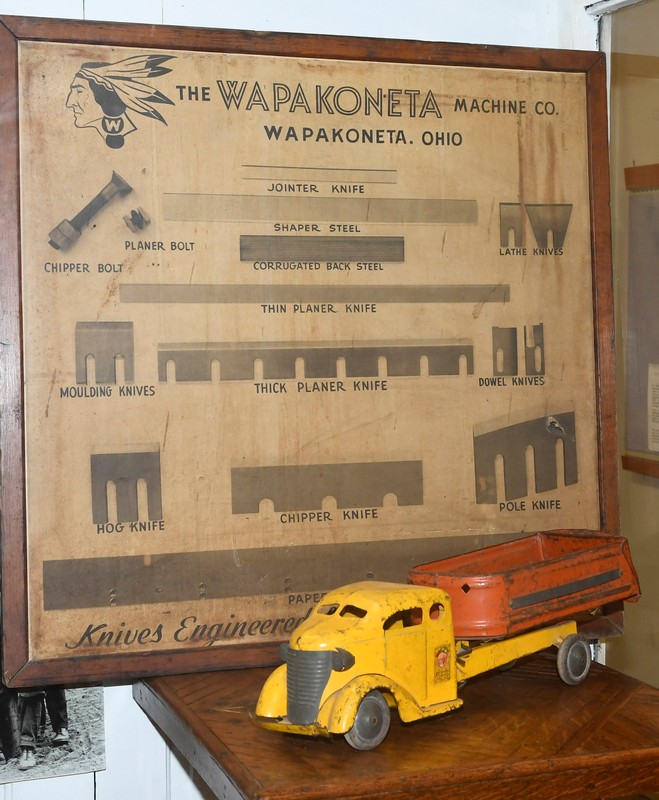The History of Auglaize County in 75 Artifacts
Introduction
Text-to-speech Audio
tbd
Images
First Things First: The word Auglaize--for our river and our county--is French for "clay-filled waters."
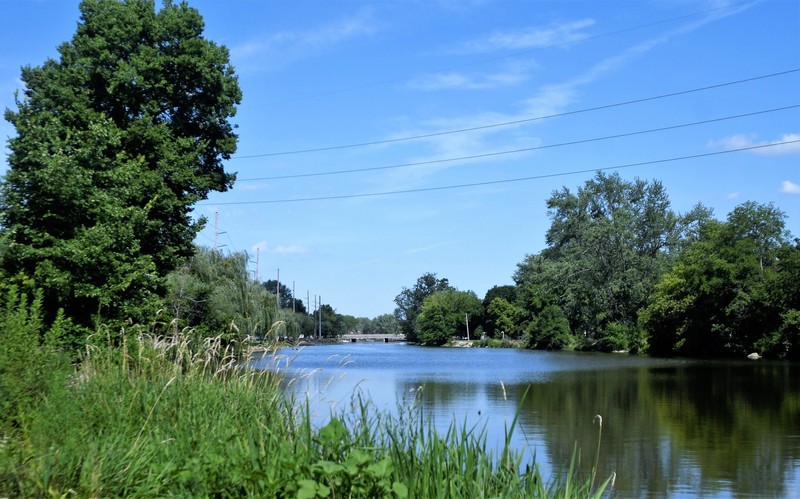
A Picture Postcard of the 1894 Auglaize County Courthouse
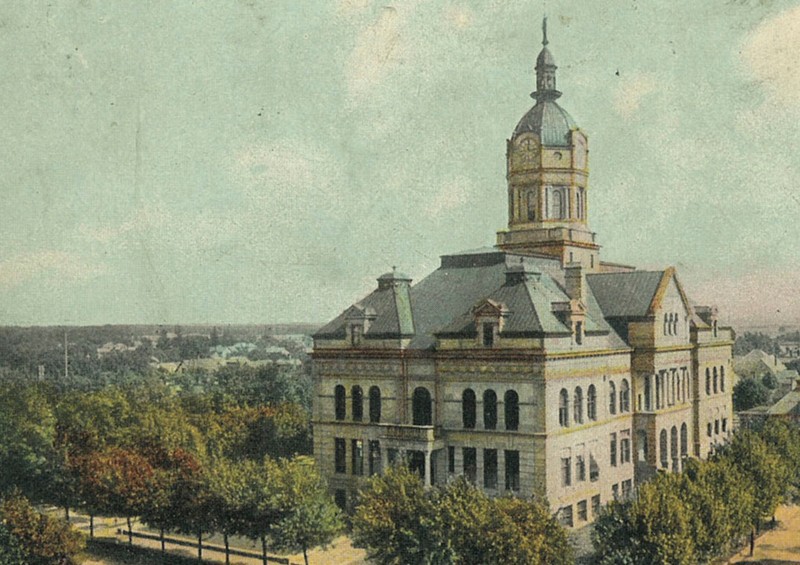
1846 Robert Skinner Letter Advocating for Auglaize County. A newspaper publisher, Skinner had little time to enjoy the establishment of the county in 1848, as he died of tyhpoid fever in 1849.
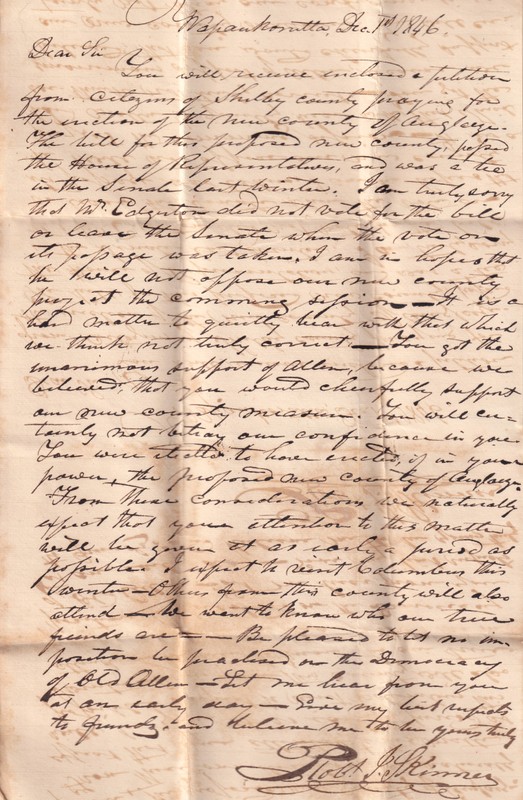
Putnam County Petition AGAINST the establishment of Auglaize County--not everyone wanted this!
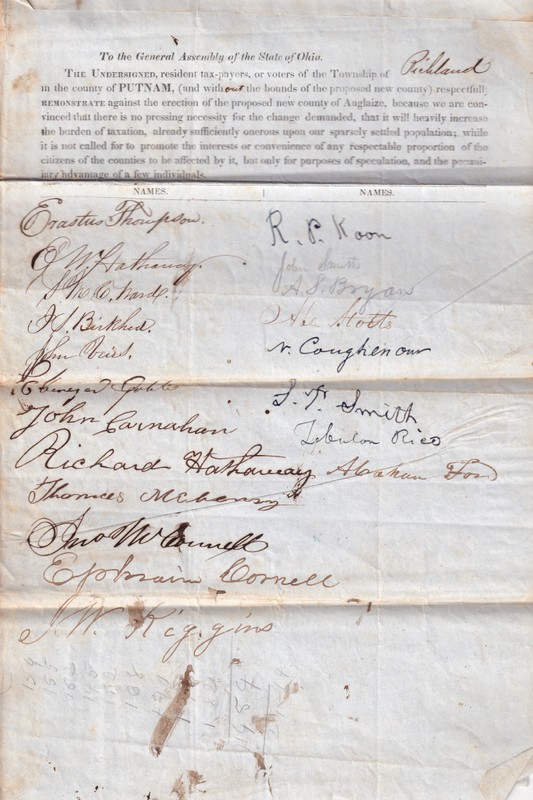
The Auglaize County Courthouse continues to serve as the largest living artifact defining Auglaize County.
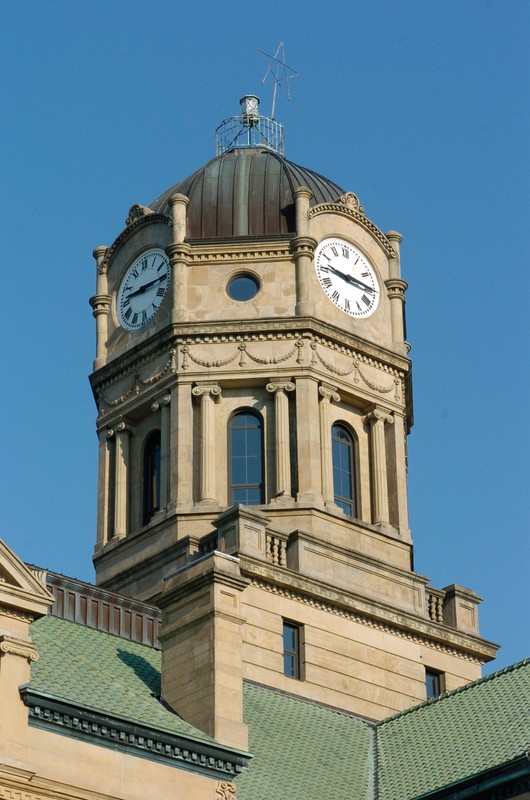
Formerly gracing the top of the Courthouse, the Statue of Justice was removed in the 1950s, but restored in 1994 and placed in the building's lobby.
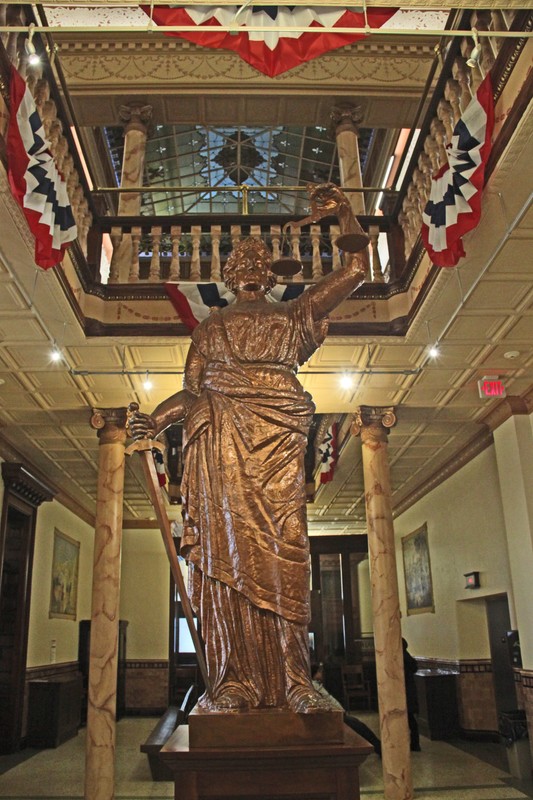
A view of the second story of the courthouse, highlighting its remarkable architectural detail
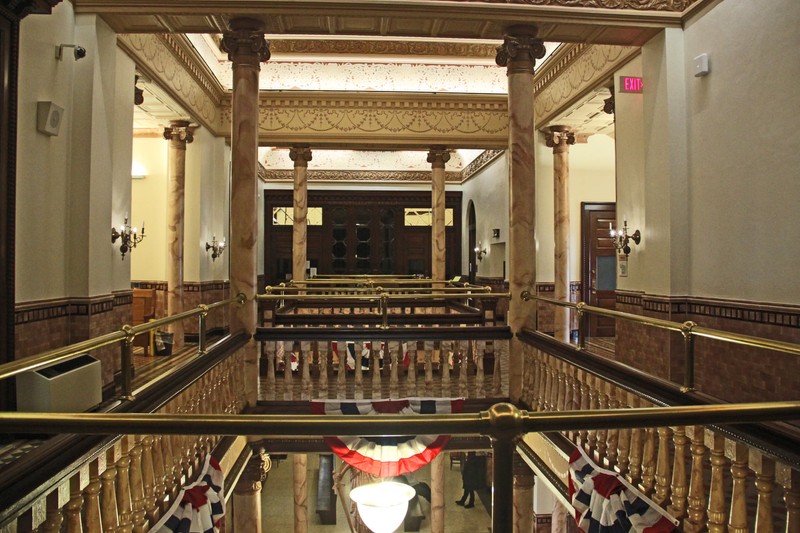
A skylight at the courthouse
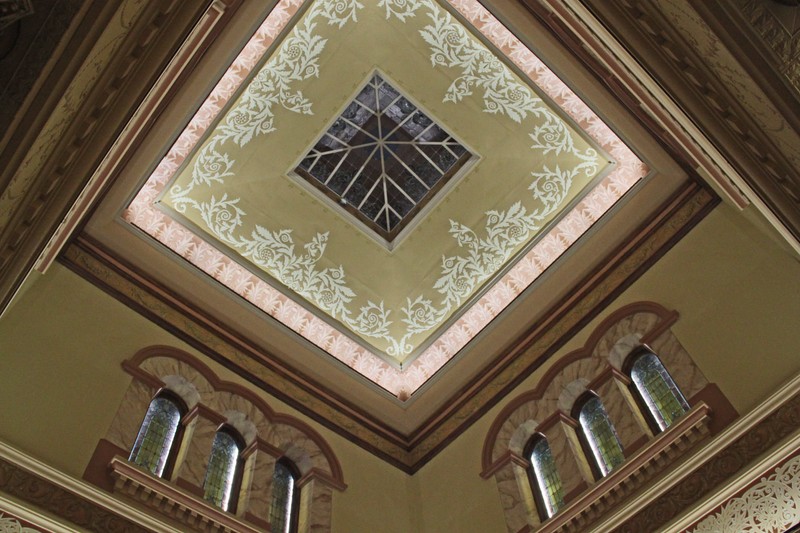
GOVERNMENT ARTIFACTS. Several county elected officials provided historic artifacts reflecting the responsibilities of their offices, including these 19th and early 20th century case sleeves (envelopes) from the Clerk of Courts.
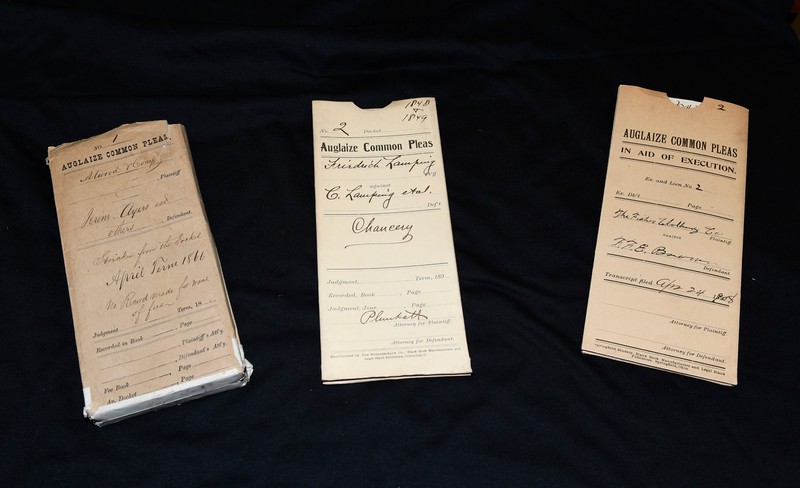
Book of Barrett's Blanks
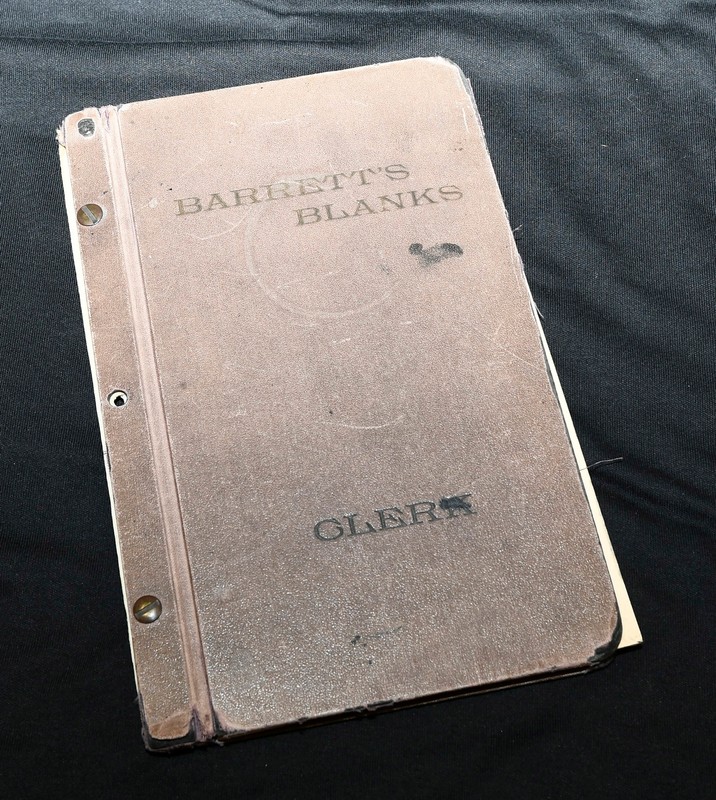
Seal from the Clerk of Courts
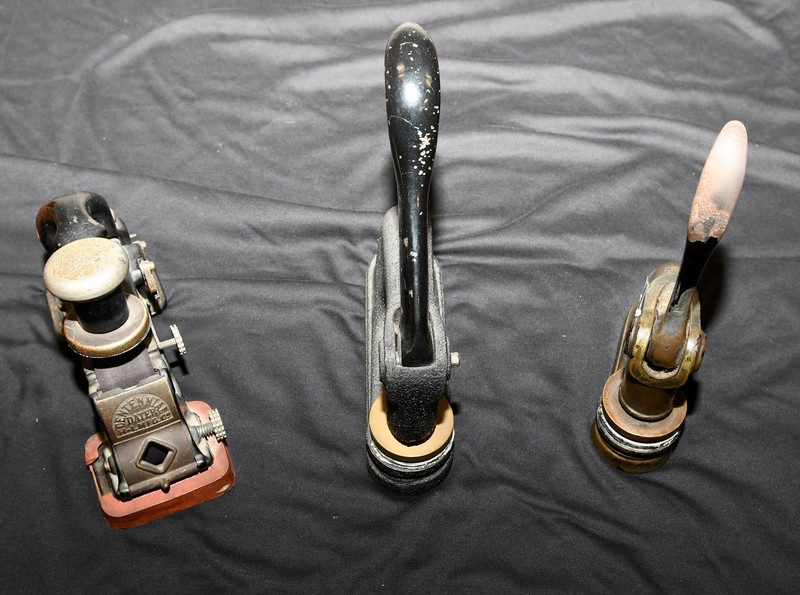
Jury Wheel from the Common Pleas Court, used to determine the pool of potential jurors.
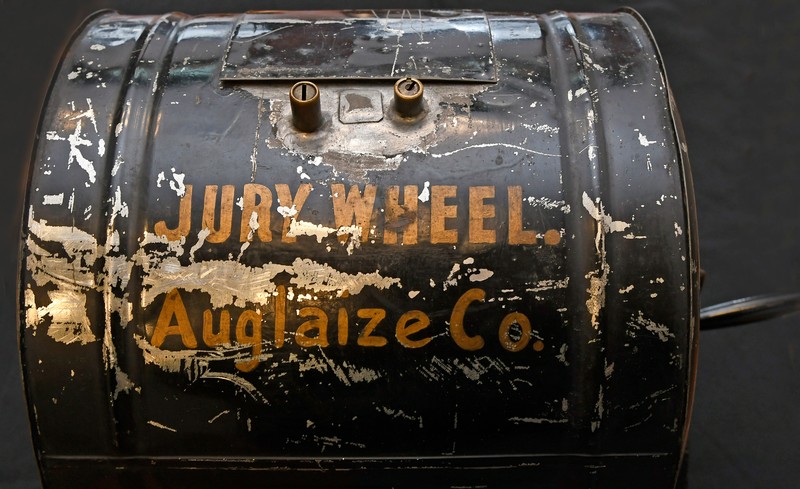
1895 Bible used in Common Pleas Court
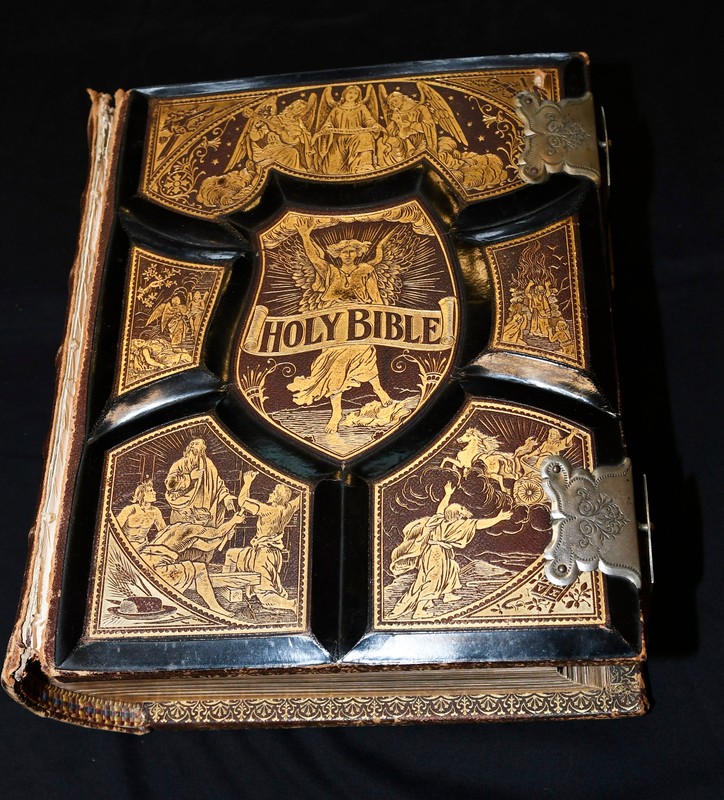
States Common Pleas Court Judge Frederick Pepple, "I also have a wooden bung mallet that has a label on it of “Exhibit A.” I believe that this was a joke given to one of my predecessors, as it predates 1978 when I started to practice law. It has been in the Judge’s Chambers, and is the type of mallet that was probably used in the old brewery here in town.'
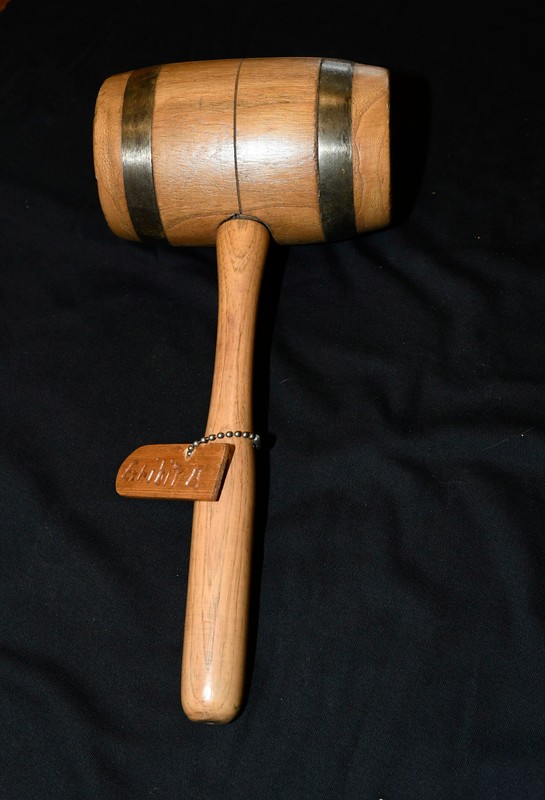
Bookcase with historic law books
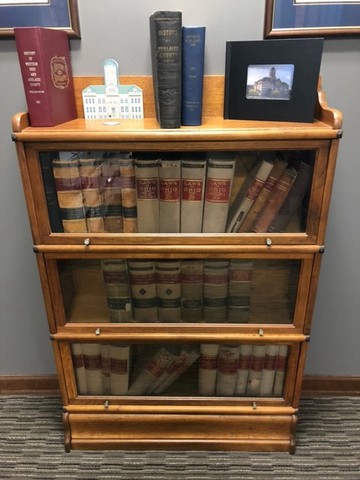
Law Books, 1905 History of Auglaize County, and 1923 History of Auglaize County
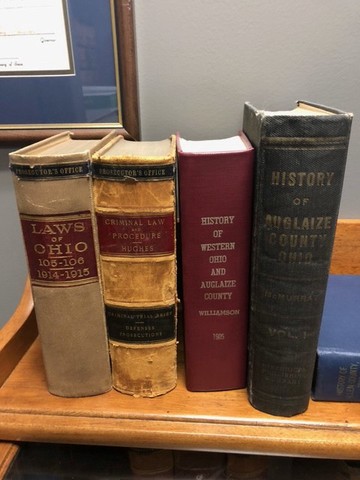
Pen and Ink Set, formerly used in the county Recorder's Office
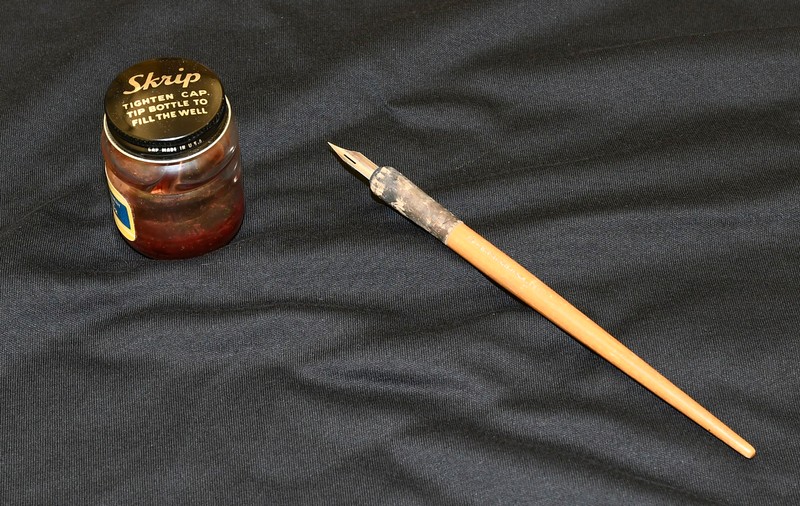
Historic Deed (noting President John Tyler, president from 1841 to 1845)
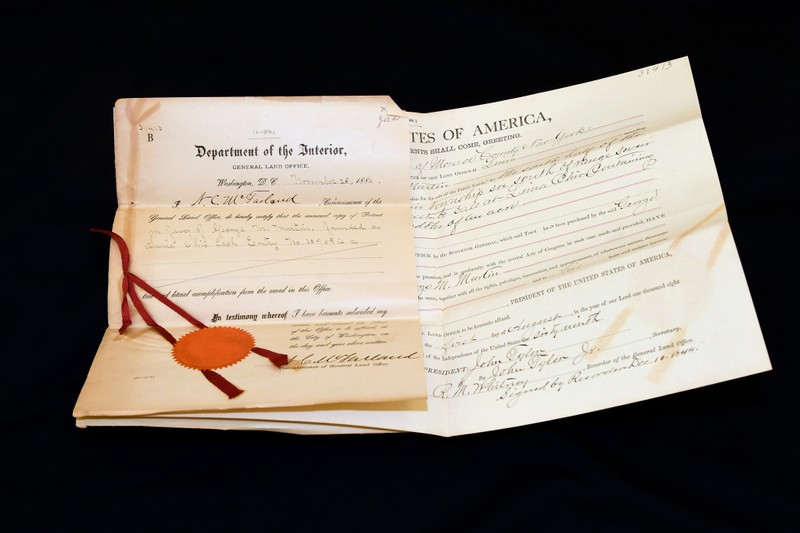
Cast Iron Recorder's Seal, still used today
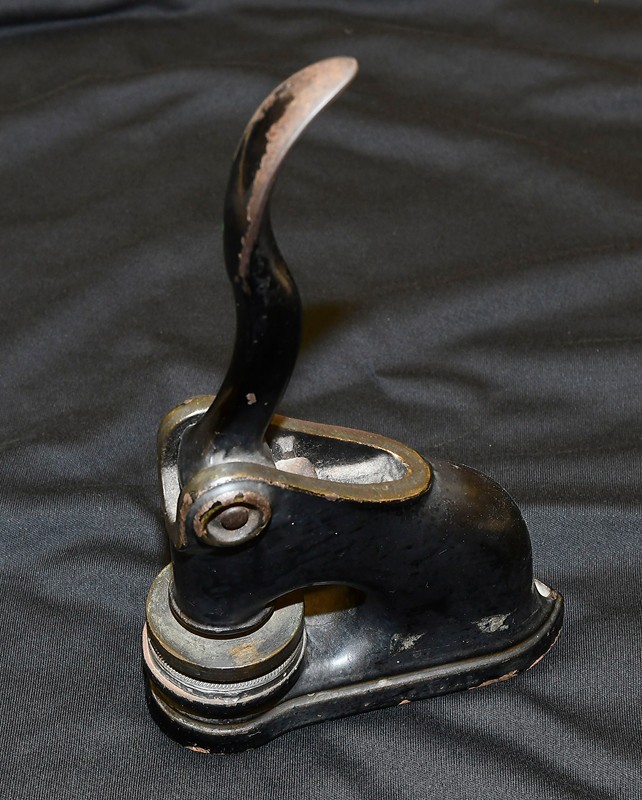
Historic Underwood Typwriter, accompanied by a frame photograph documenting its use in the Recorder's Office in the early 20th century
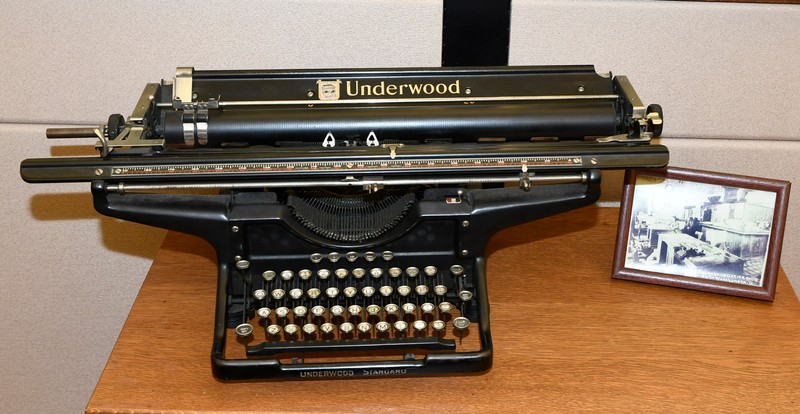
Hand-crank Microfilm Roller, Splicer, and Camera for Creating Microfilm
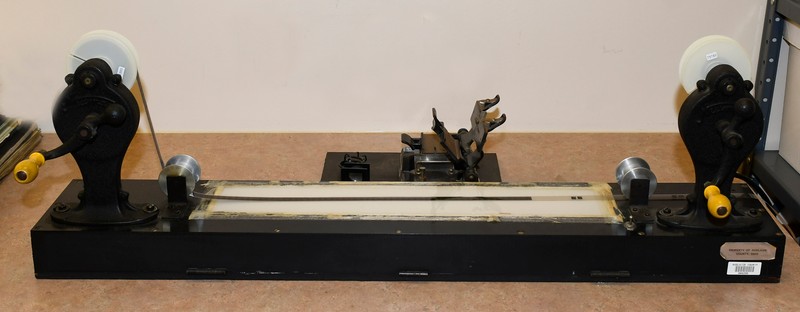
Historic Surveying Equipment
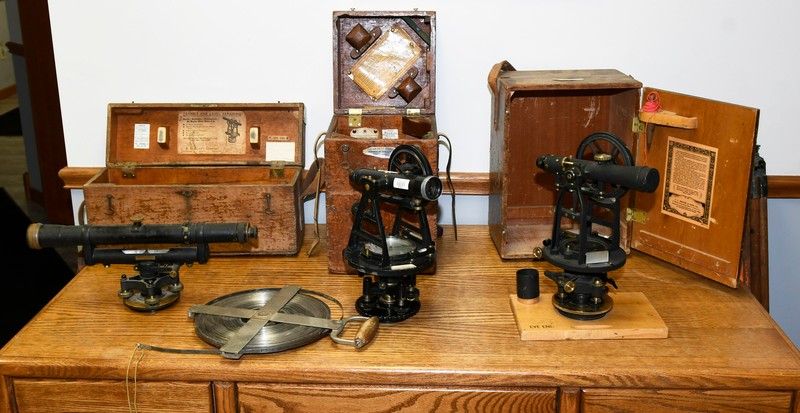
Early Road Grader
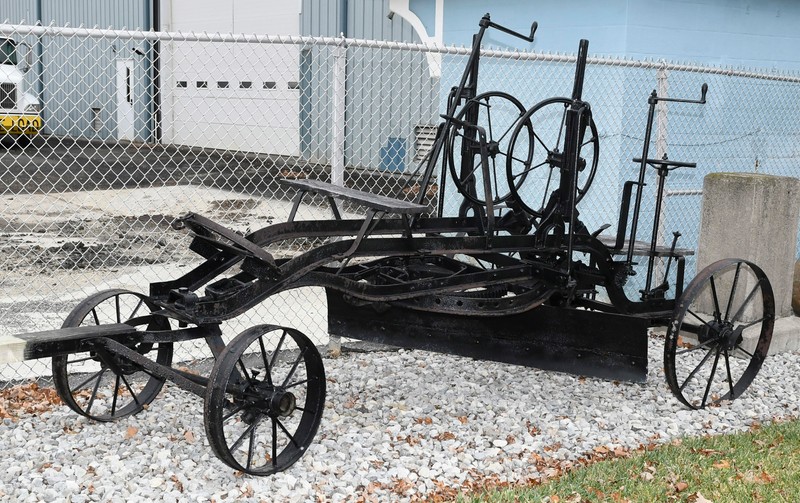
1904 Bridge Plaque
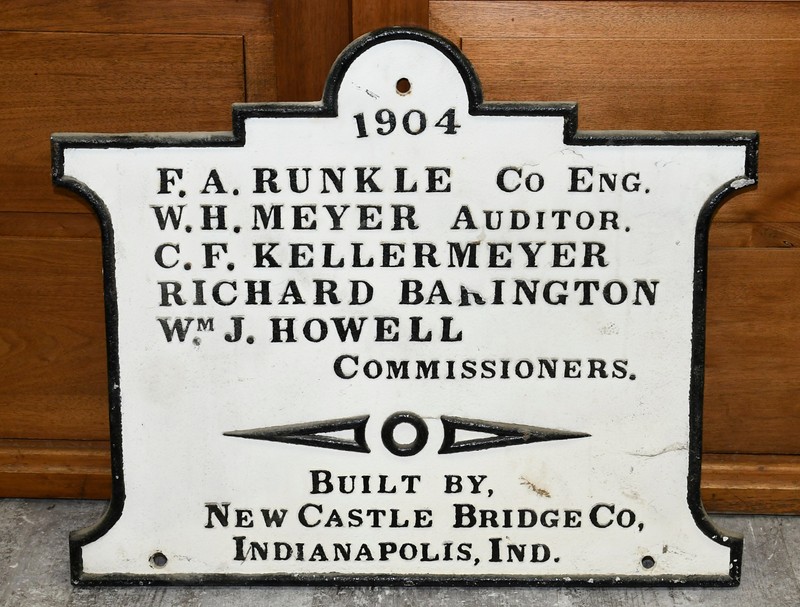
Lock with Key Used in the Original 1850 Auglaize County Jail until 1973 (when an interior part broke)
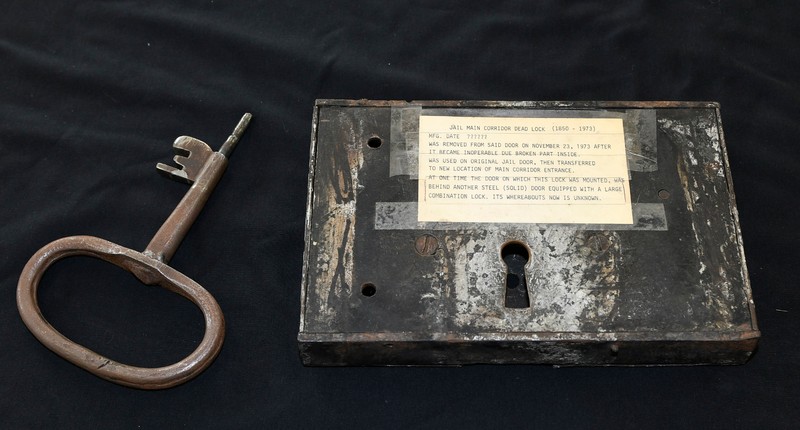
Detectives' Evidence Kit used in the 1950s and 1960s
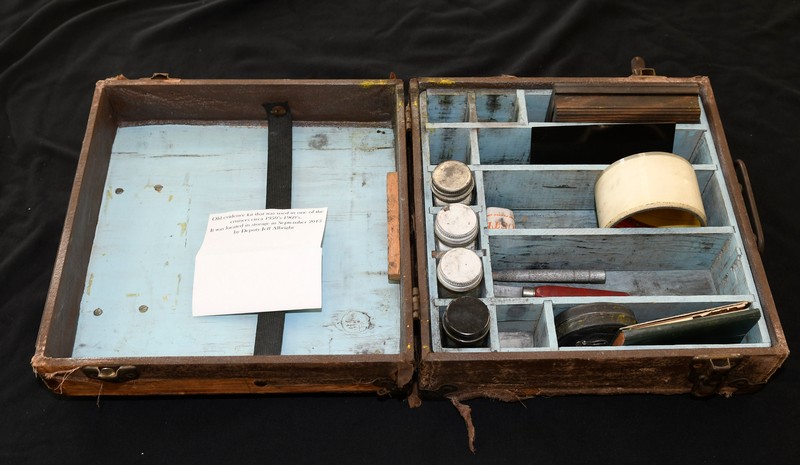
This Tommy Gun given to the Sheriff's Office during "gangster days."
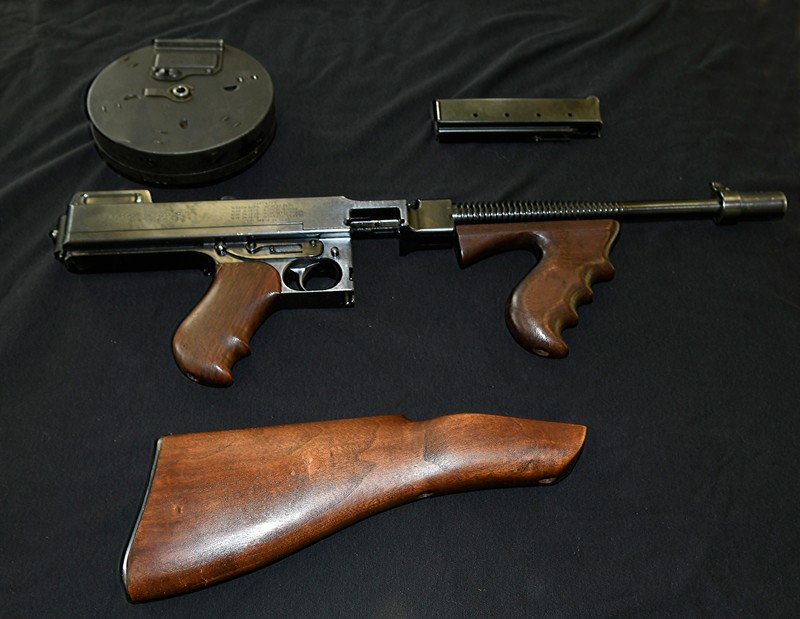
Display of Historic Handcuffs
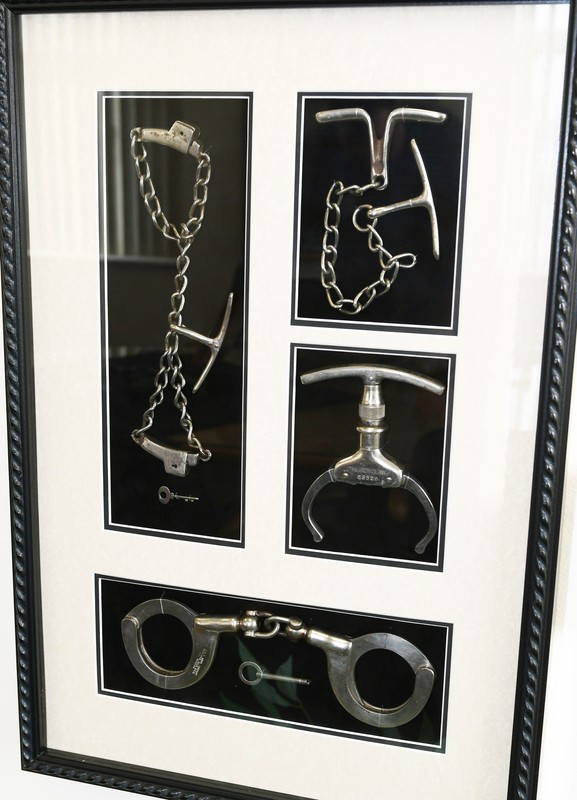
An Early Wood Ballot Box, believed to have been used at Freyburg
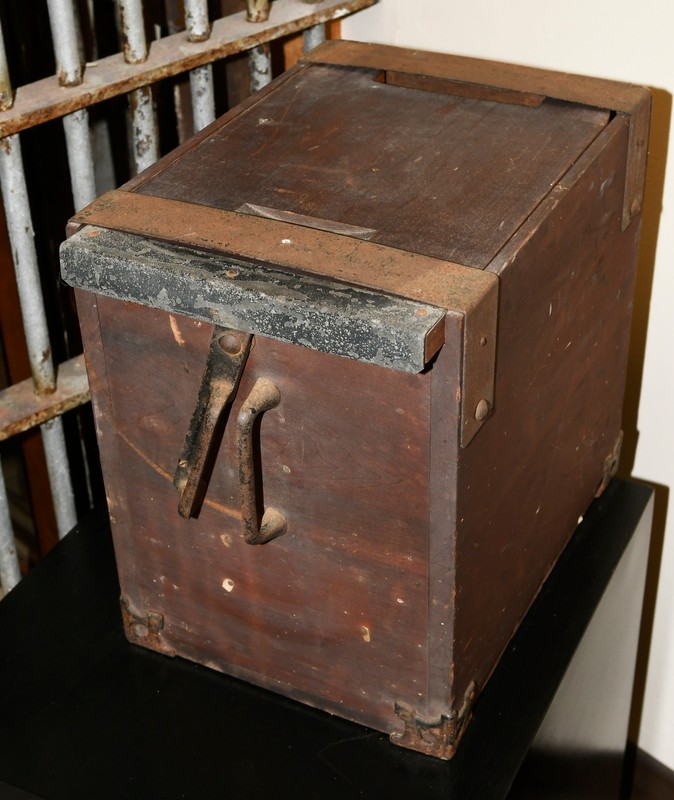
1930s Election Advertisement
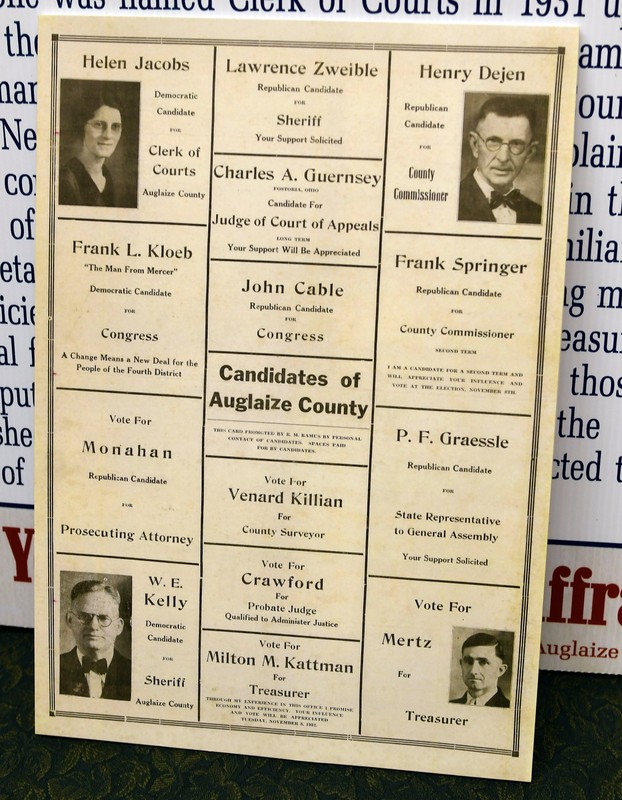
Political Sign for Oscar Raberding (originally installed on a car roof)

Wooden Shoes made in Germany and used by the family of Ladbergen, Germany, immigrant Henry Wellman and his descendants. Ladbergen is near the Netherlands.
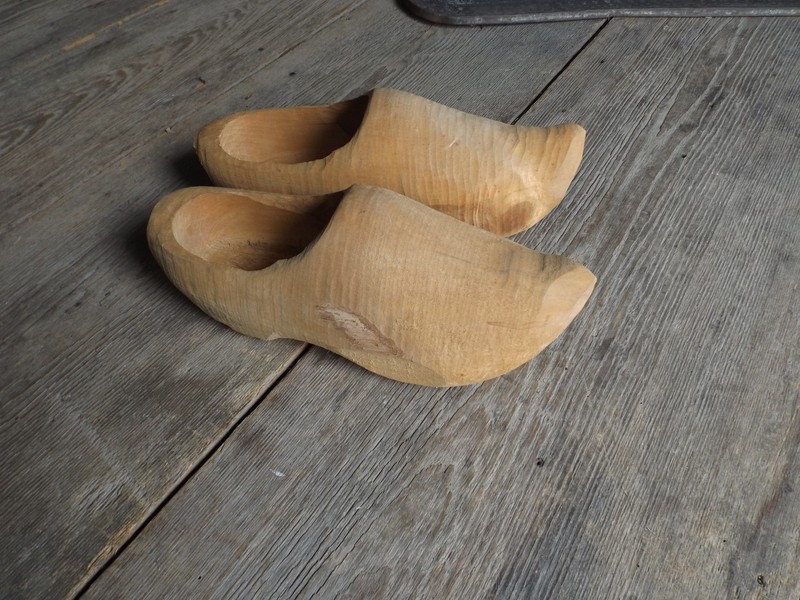
Immigrant Theodore Kempker's Trunk from Germany, along with Wood Shoes made in 1856nby Anton Riethman in Minster
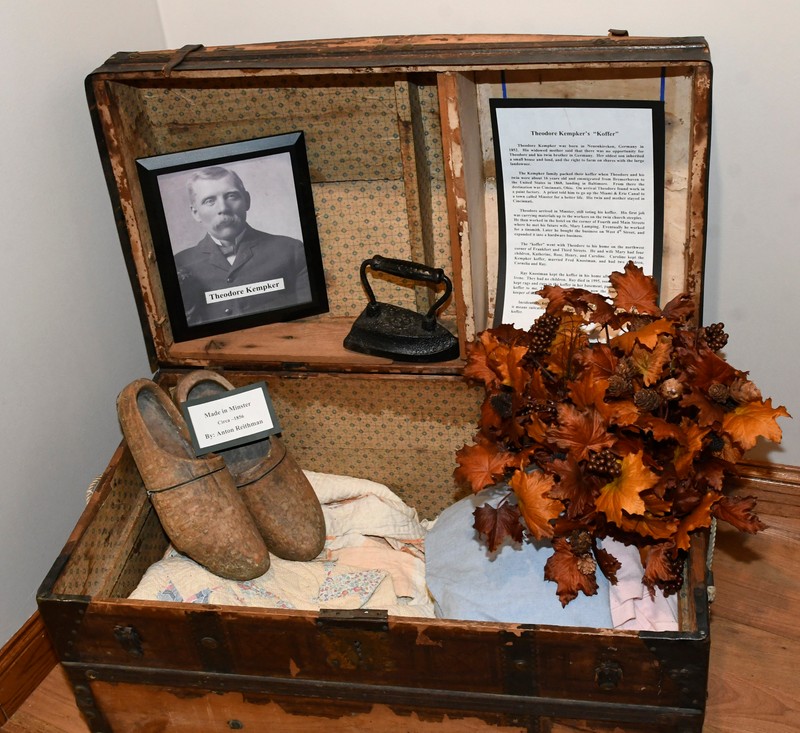
Detail of the 1837 Brick Lined Luelleman House, based upon the European wattle and daub construction technique, as adapted in the New World.
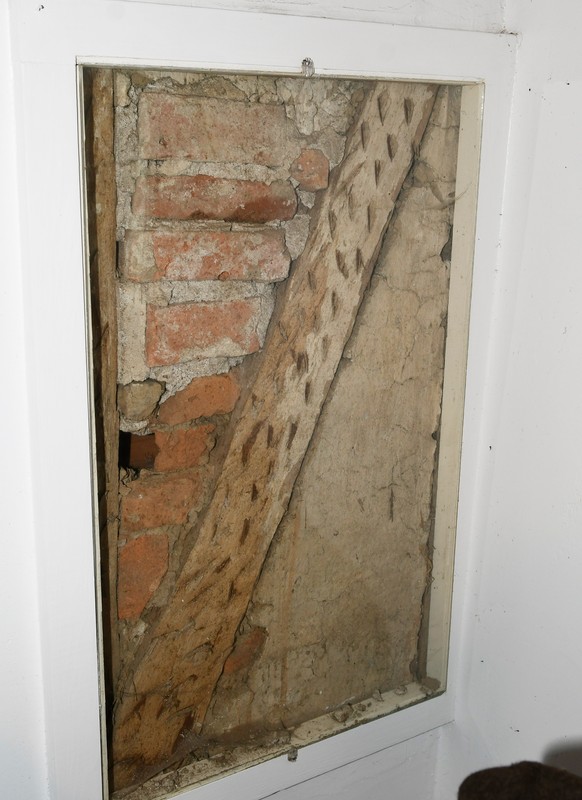
Another Detail of Brick Lining from the Luelleman House
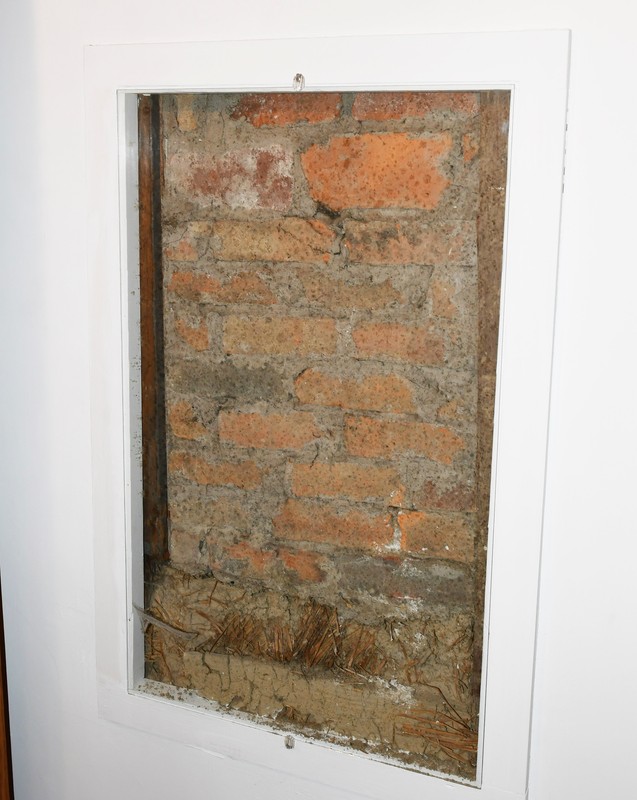
Lawrence Meckstroth remodeled his farmhouse (1.5 miles west of New Knoxville) in 1950 and discovered this German inscription covered over with paneling on the south wall of the house. Carved into oak, the inscription is dated April 4, 1846. Providing a sobering perspective about life on the Ohio frontier, a rough translation of the Platt Deutsch reads: "We (at this house) go in and out / The world is indeed a pleasant room./ But it is also a borrowed house/ And if we make ourselves too comfortable here / Then death shows us the door."
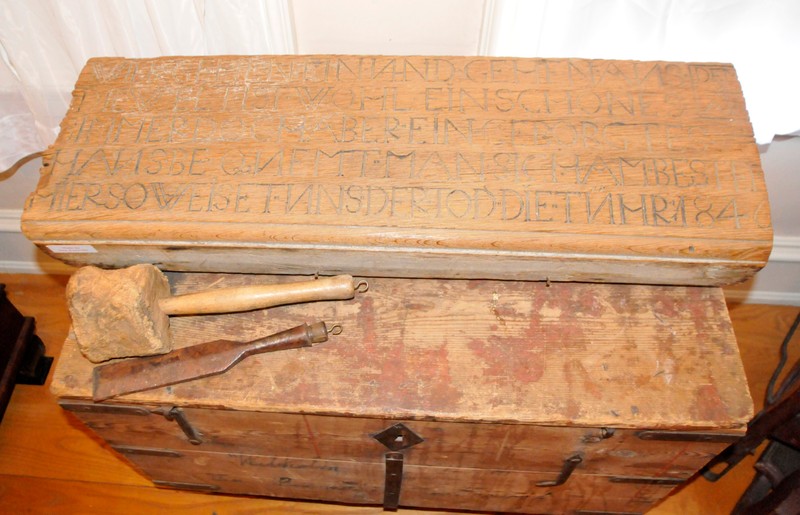
Plat Map of Stallo's Town (now, Minster), founded in 1832
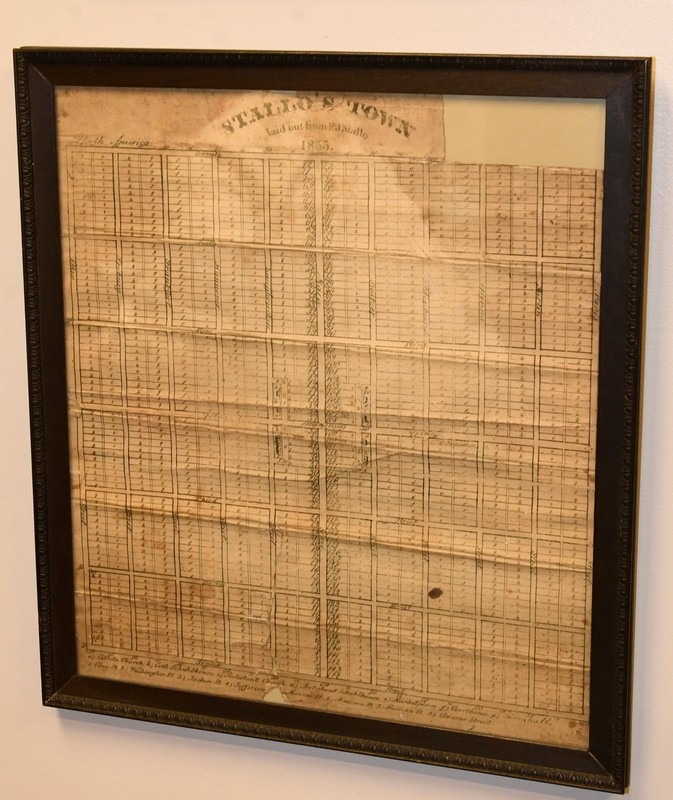
THE MIAMI & ERIE CANAL. What brought immigrants to this part of Ohio, previously unsettled by Europeans? A major incentive was the construction of the Miami & Erie Canal, which allowed goods to be transported from rural areas to rural markets, such as Cincinnati. Here is a Miami & Erie Canal Mile Marker.
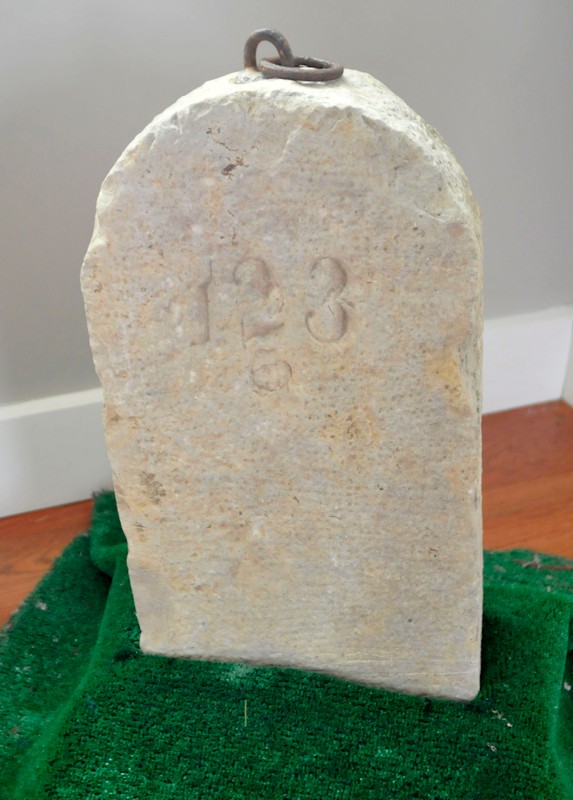
An 1874 order for shipping goods on the Miami & Erie Canal
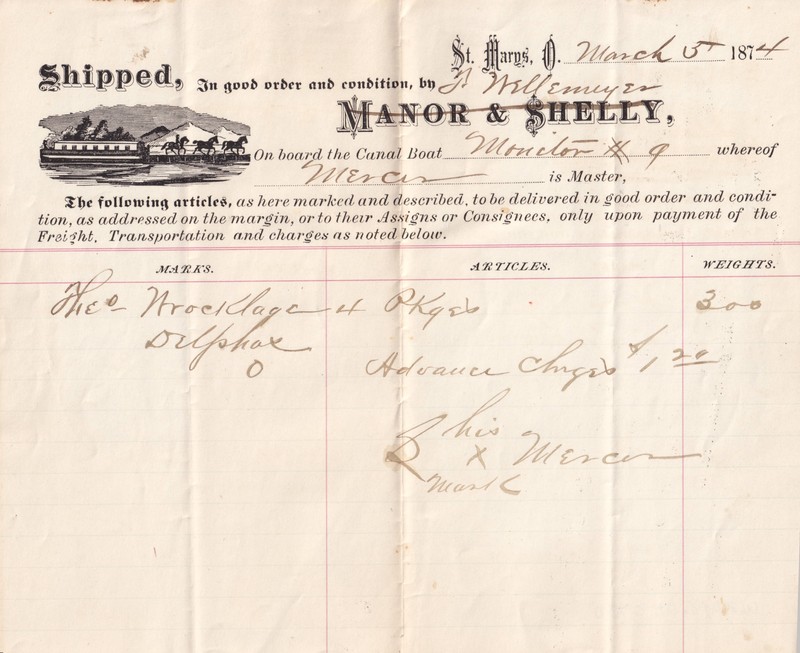
Entrepreneurs in many communities along the route of Miami & Erie Canal took advantage of the water power to construct mills.
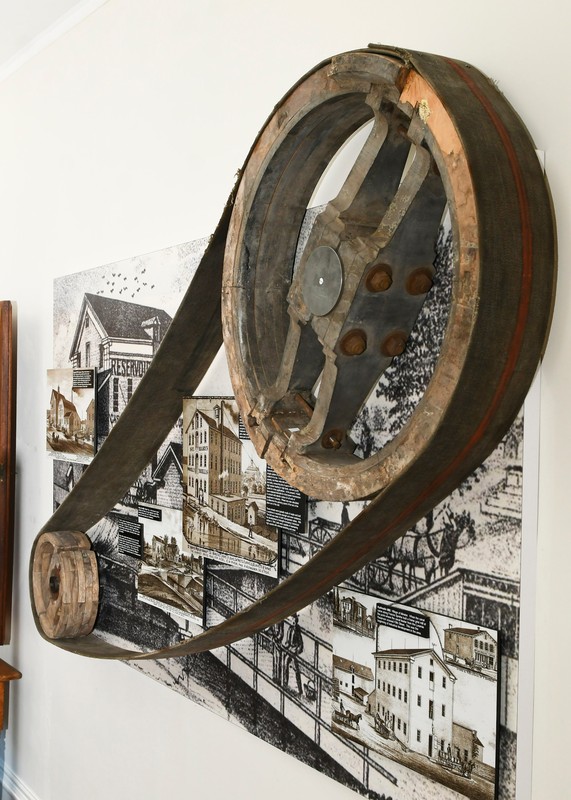
Mill Stone used at a Facility along the Miami & Erie Canal
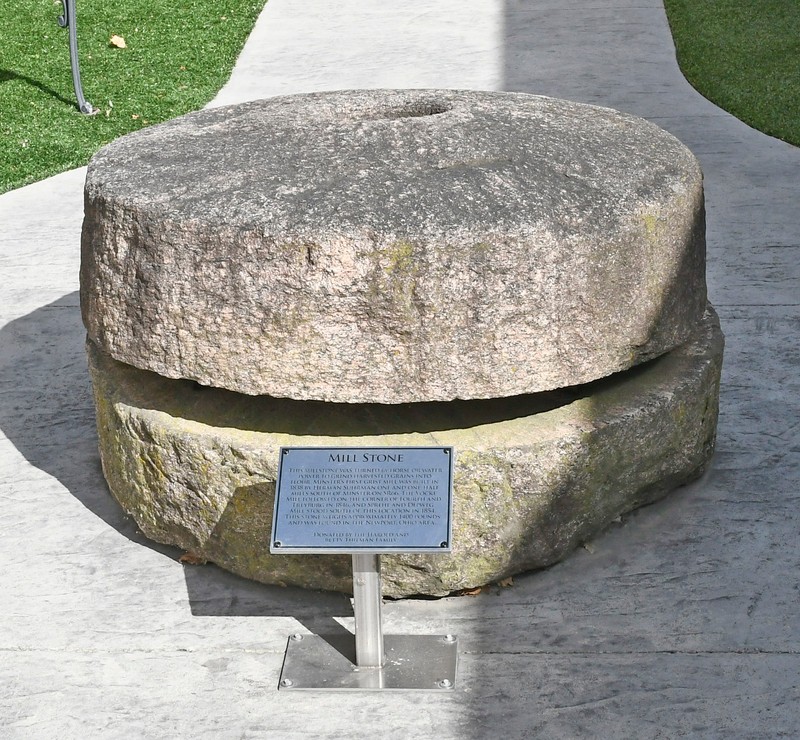
Tollkeeper's Desk for Lock 13 of the Miami & Erie Canal. Boats were charged for using the Miami & Erie Canal, paying for their shipments at the locks.
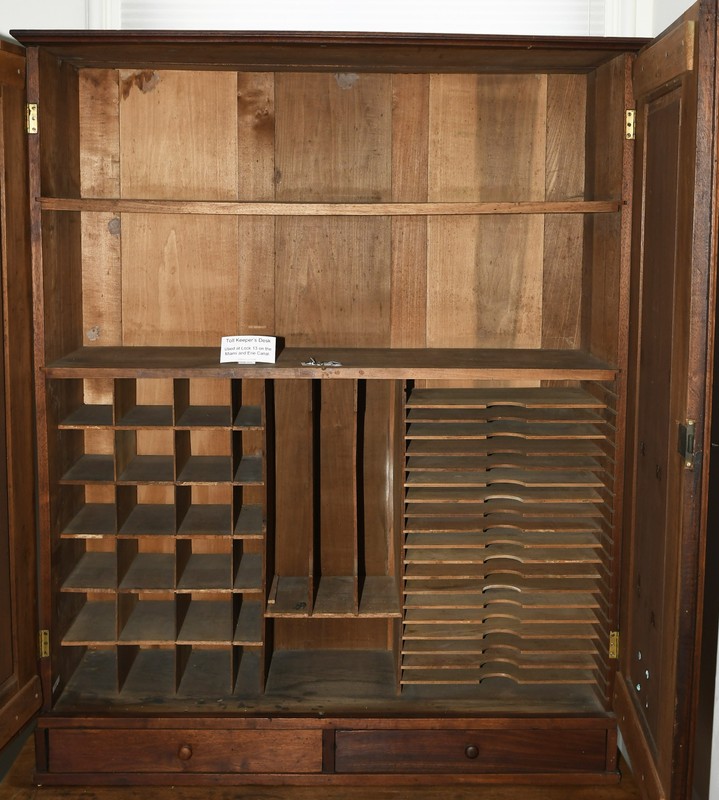
AGRILCULTURE. Settlers were also attracted to the area by the good farming conditions, including rich land. Walking Plow
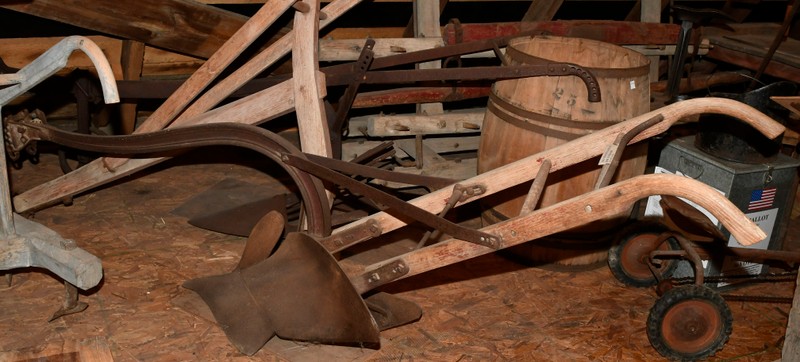
Another Walking Plow
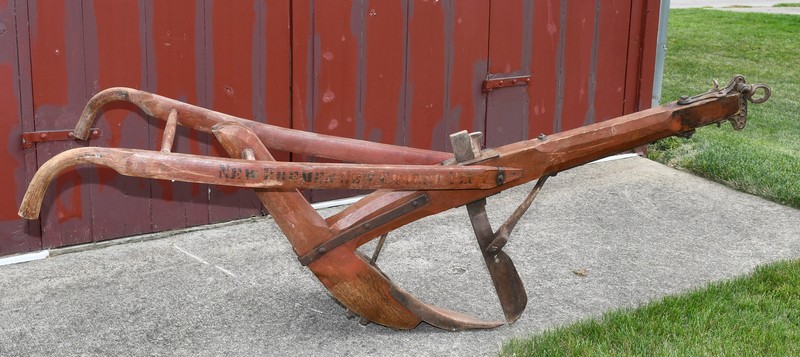
All Wood Shovel, carved from a local tree
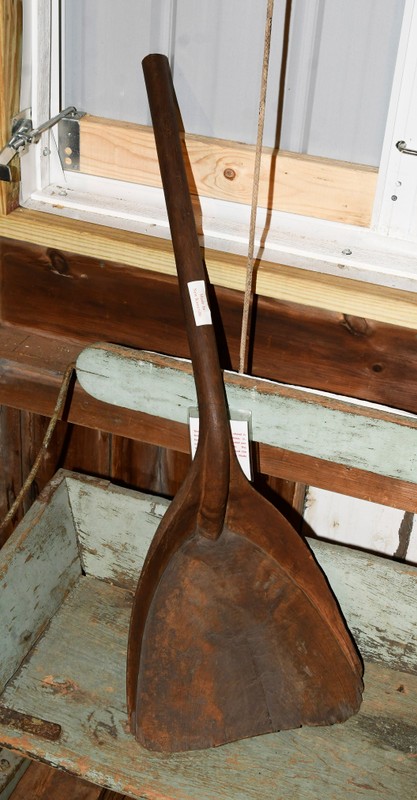
Corn Planter
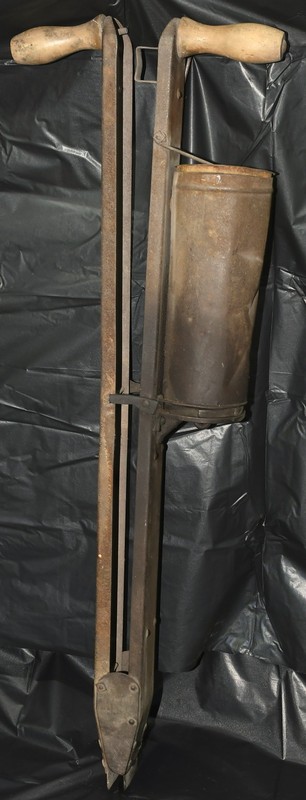
Assorted Other Farm Tools, including a rake and scythe
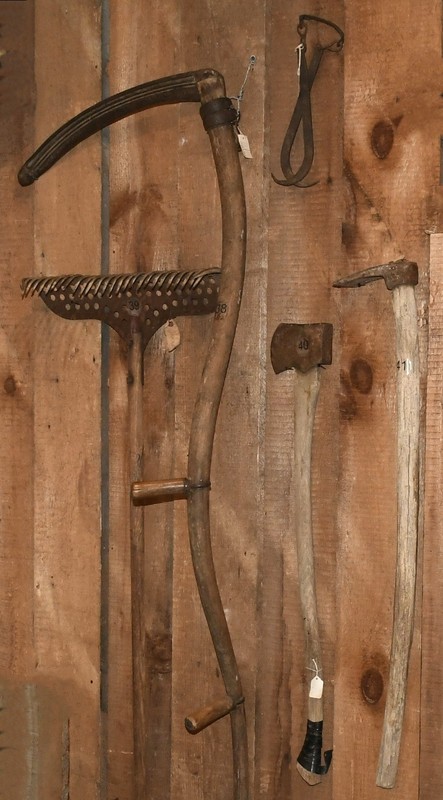
WHAT IS THIS?
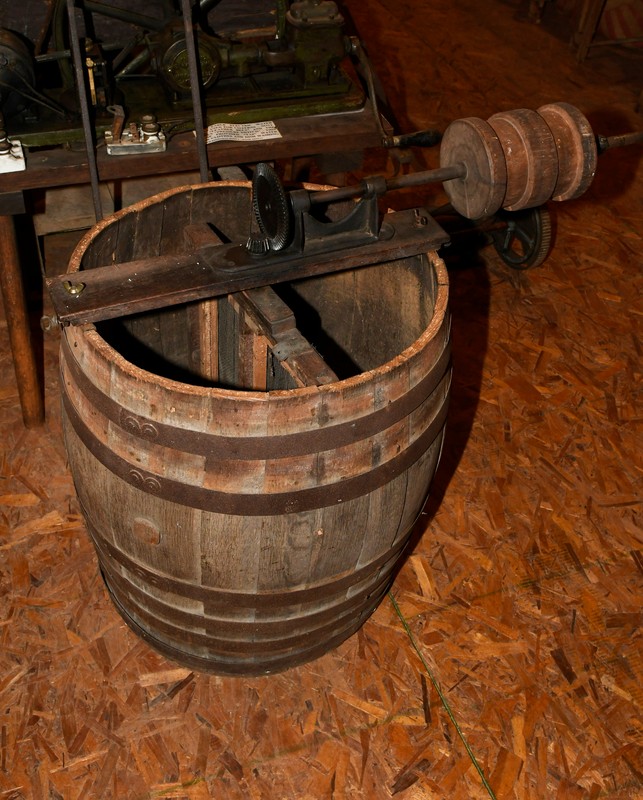
Rendering Kettle from the
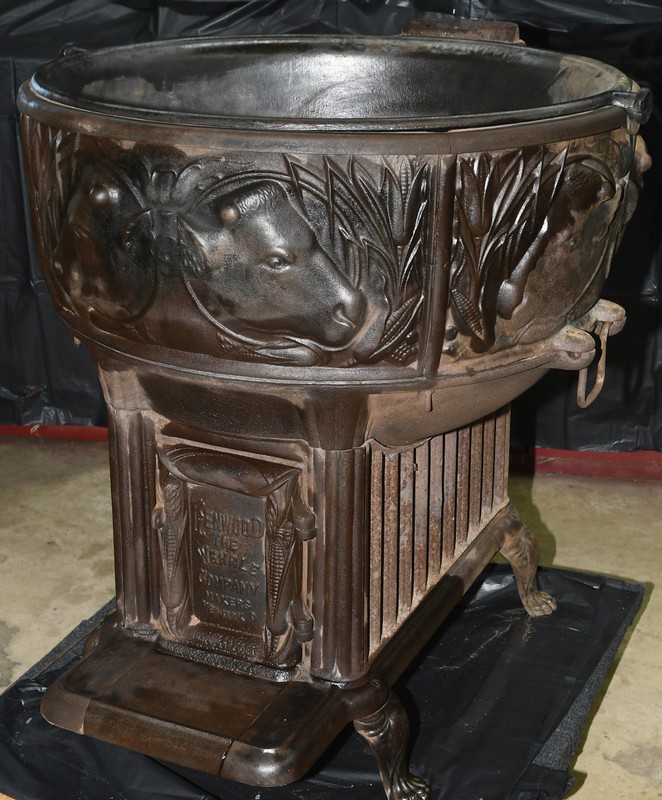
A sycamore grain silo carved from a tree trunk in the 19th century and used for storing seed grain or feed for animals.
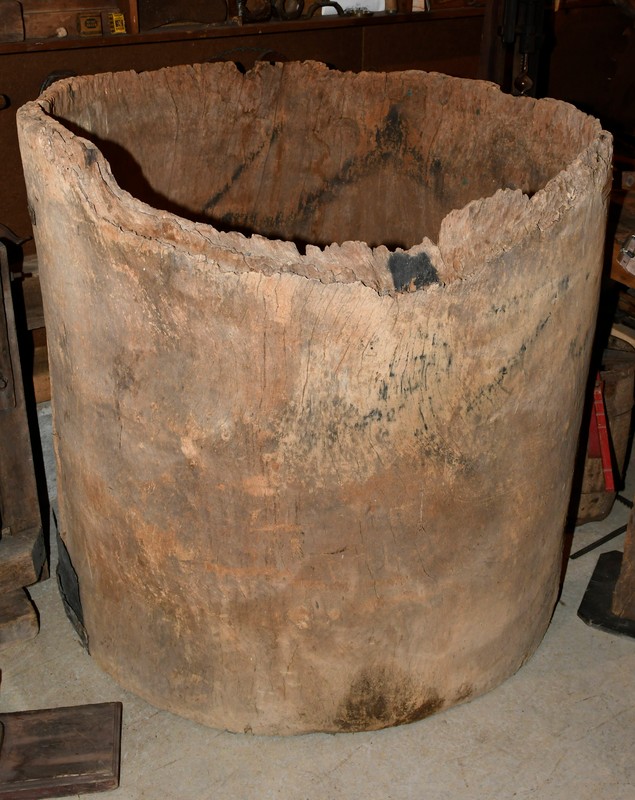
A much needed resource, especially for the summer, was ice, which was harvested from local ponds. Pictured here is Ice Harvesting Equipment.
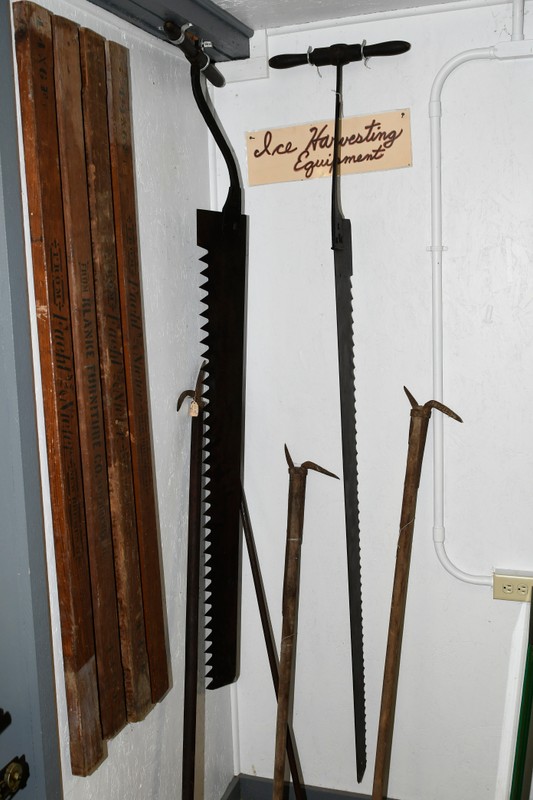
Baskets, Bags, and Record Book for Potato Farming. The bags on the left are for the G.L. Miller Farm, Waynesfield.
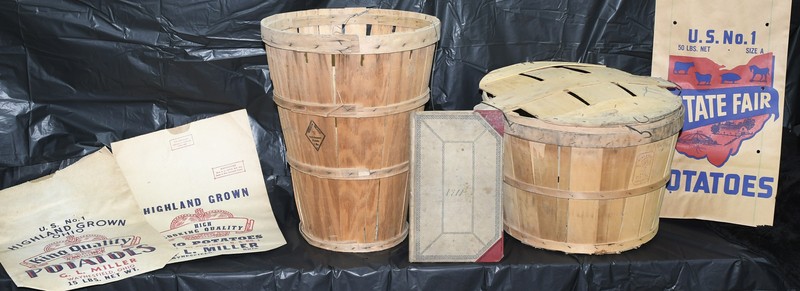
Local dairy farms prompted the establishment of local dairies, such as the White Mountain Dairy (later, Meadow Gold), New Bremen, with assorted bottles and other paraphernalia picured here.
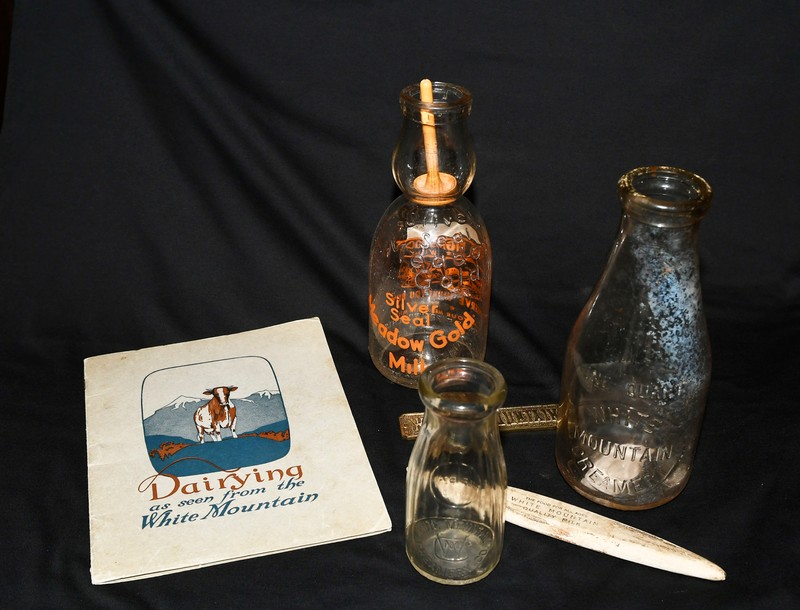
Artifacts from the Brookside Sanitary Dairy, including the delivery box for the milkman.
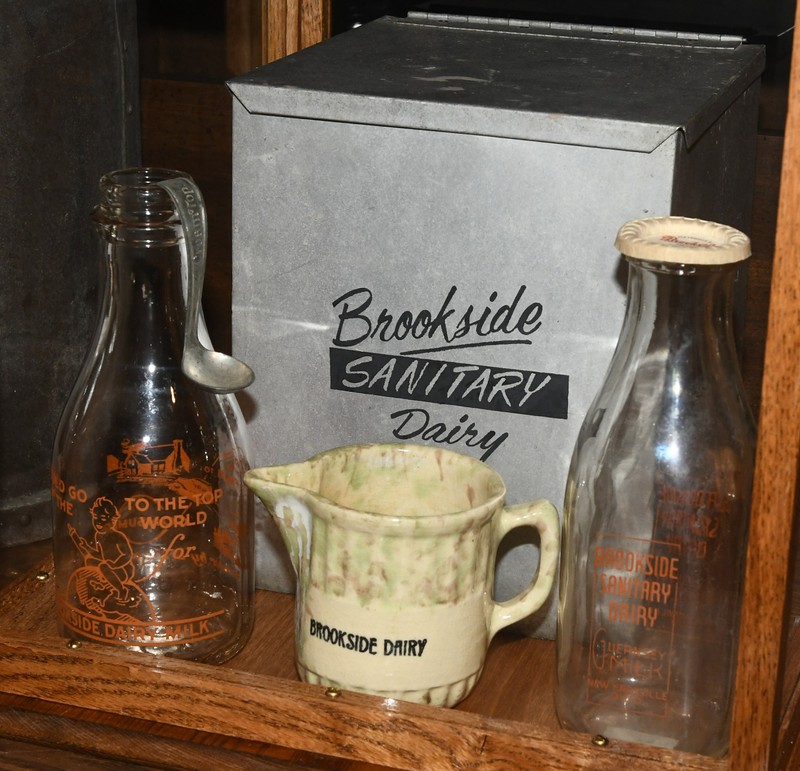
1944 Sale Poster for an auction at the Manchester Farm in eastern Auglaize County.
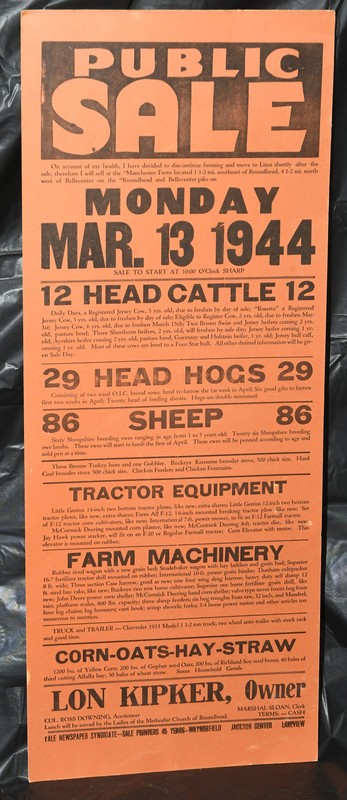
Before the advent of mechanized equipment, horses (and oxen) were integral to farm operations. This Folk Art with Horse Shoes was created at the Makley Blacksmith Shop, St. Marys.
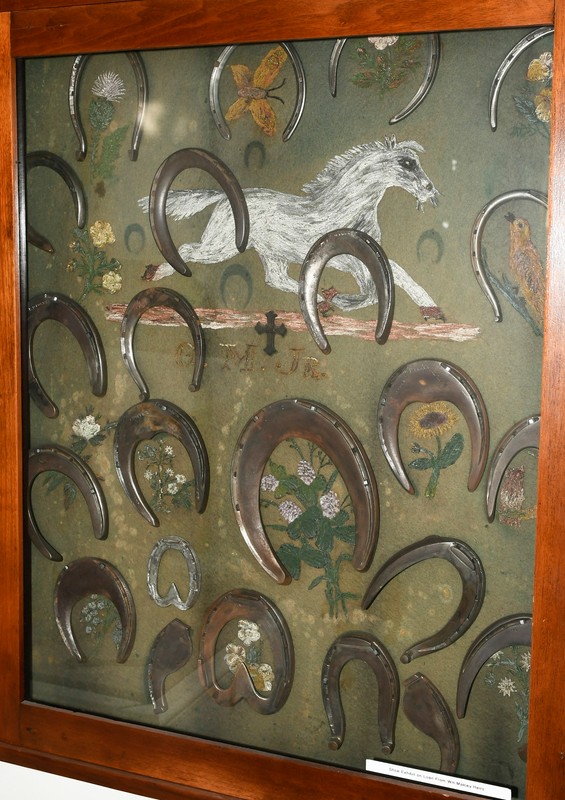
Other businesses were established to serve the needs of local farmers. This 1939 promotional calendar was provided by Oscar Pence, New Hampshire, whose business interest included hardware, farm implements, and a role as as building contractor.
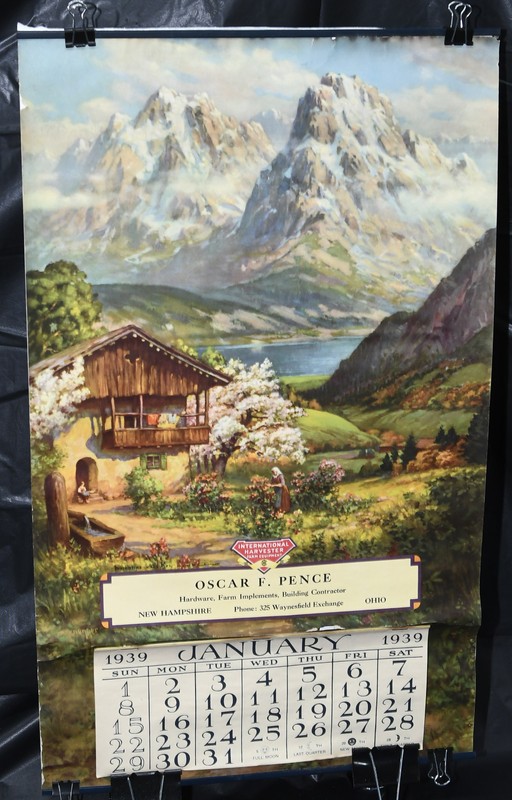
A mirror advertising the Waynesfield Stockyard
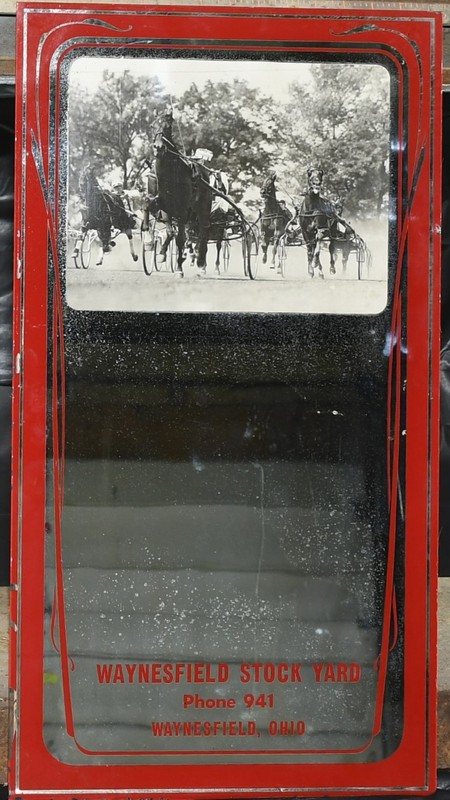
A Record Book from the New Hampshire Grain Company
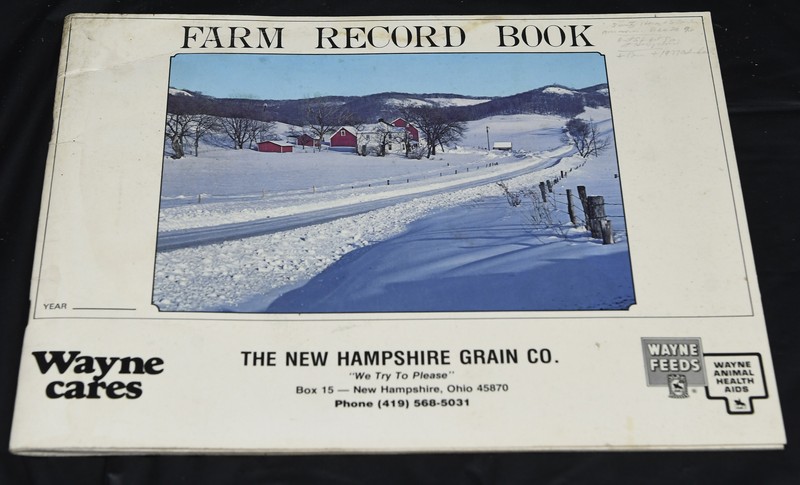
This display highlights the Cooperative and Elevator at Uniopolis.
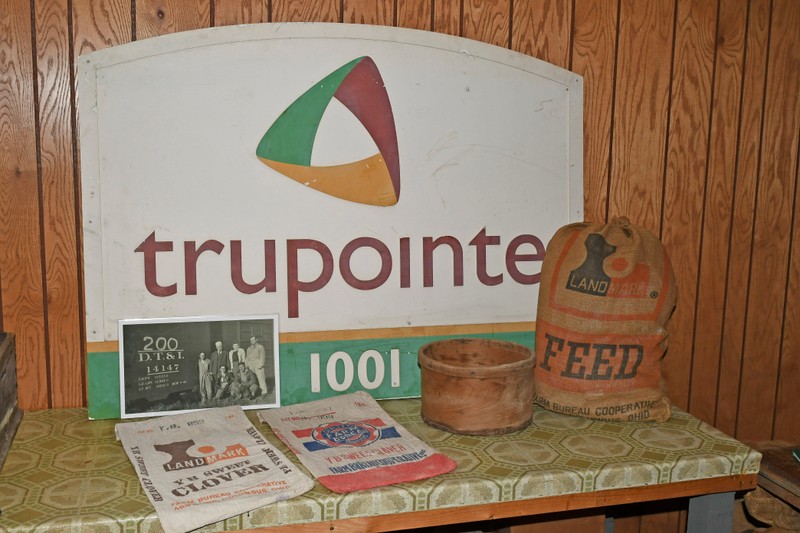
Another business serving the farming community was the Bielefeld Products Company, New Knoxville
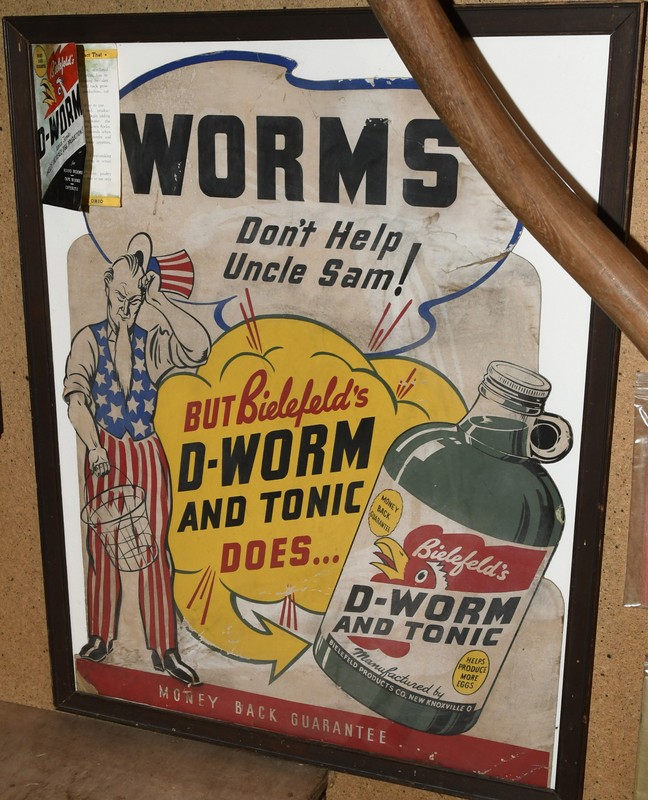
The Blue Ribbon Hatchery, Inc., New Knoxville, described itself as the "Nation's Largest Dealers in Fancy Hatching Eggs."
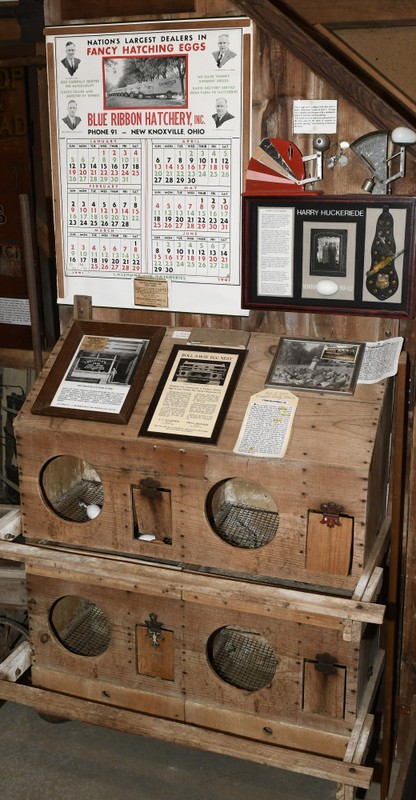
In 1858 the Dayton & Michigan Railroad arrived in Auglaize County, providing faster, yearround transportation opportunity for farm commodities and industrial goods produced here. Its north-south route went through Wapakoneta and Cridersville. Pictured here is a Stock Certificate for the Dayton & Michigan Railroad, purchased by George Holbrook, who is considered the founder of Auglaize County.
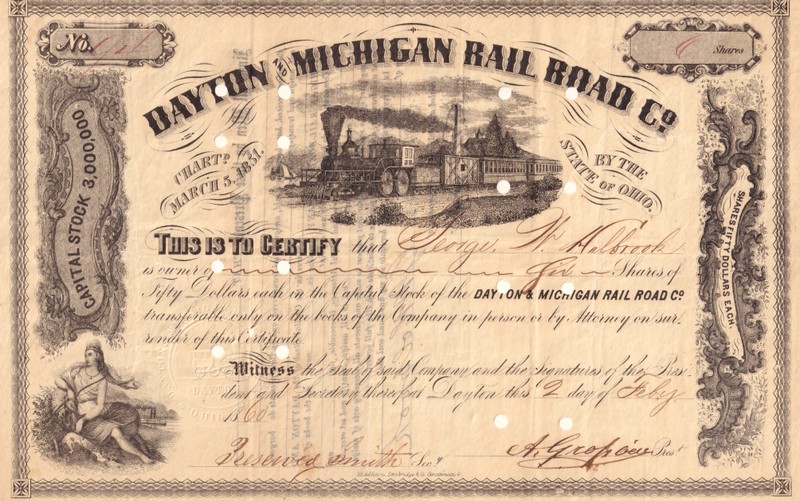
Another spur for local development was provided by the discovery of oil and natural gas. This exhibit at the Cridersville Historical Society highlights the history of this resource in the Cridersville area.
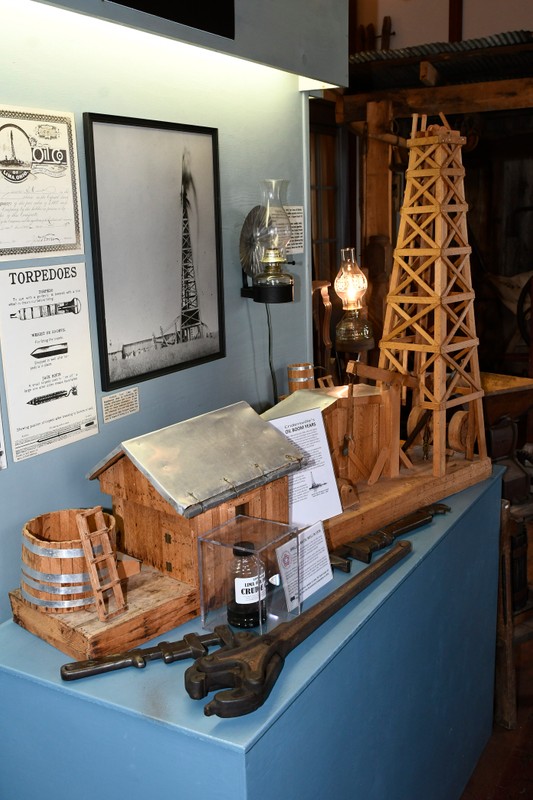
Business Card for Bruner Manufacturing, Buckland, "Cold Pressed Steel Wagons a Specialty"
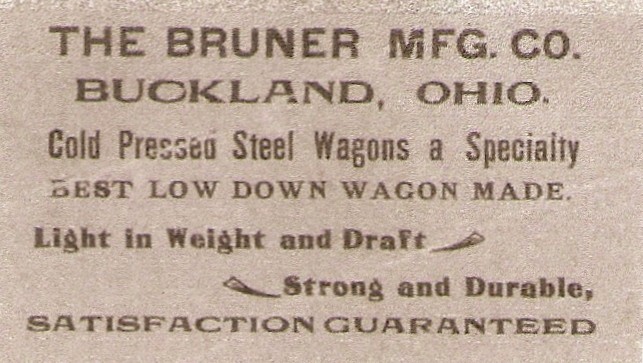
Wooden Shoe Brewery, Minster
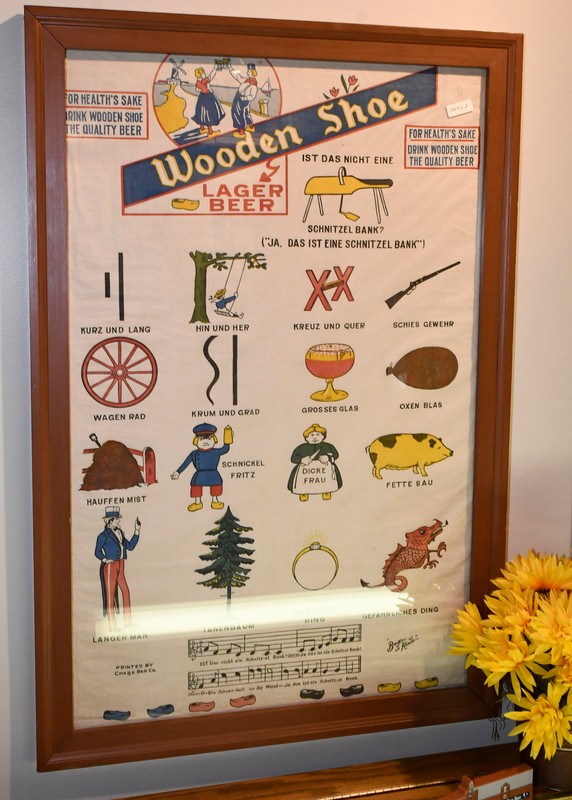
St. Marys Blankets
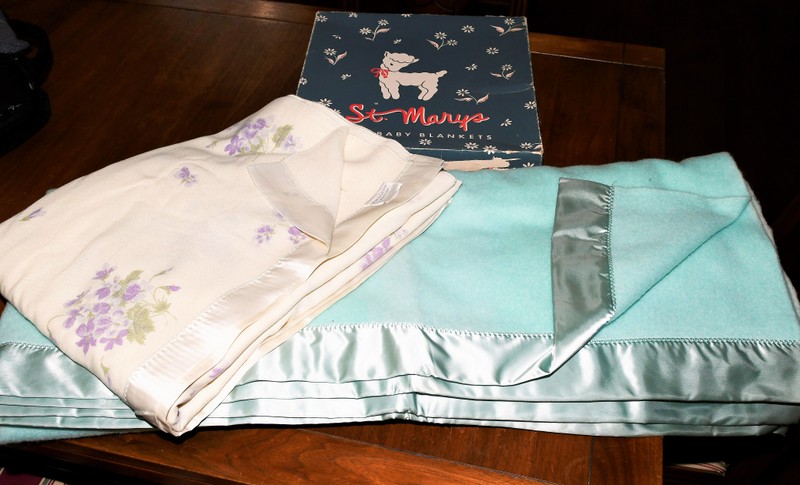
New Bremen Blanket Company
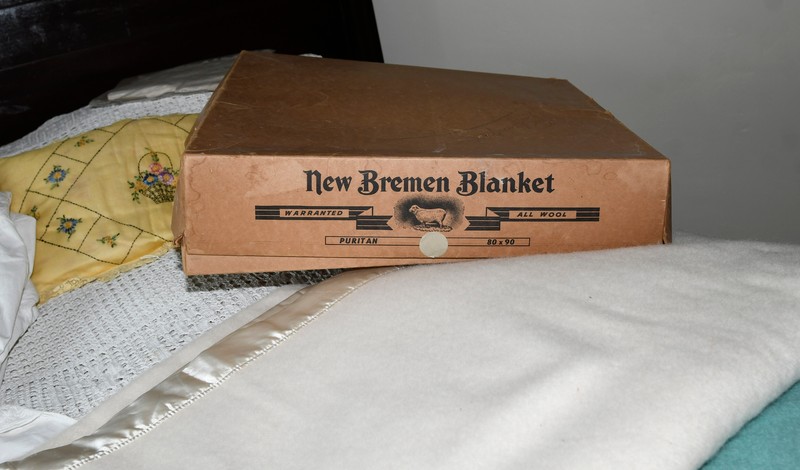
Spoke & Wheel Company, St. Marys
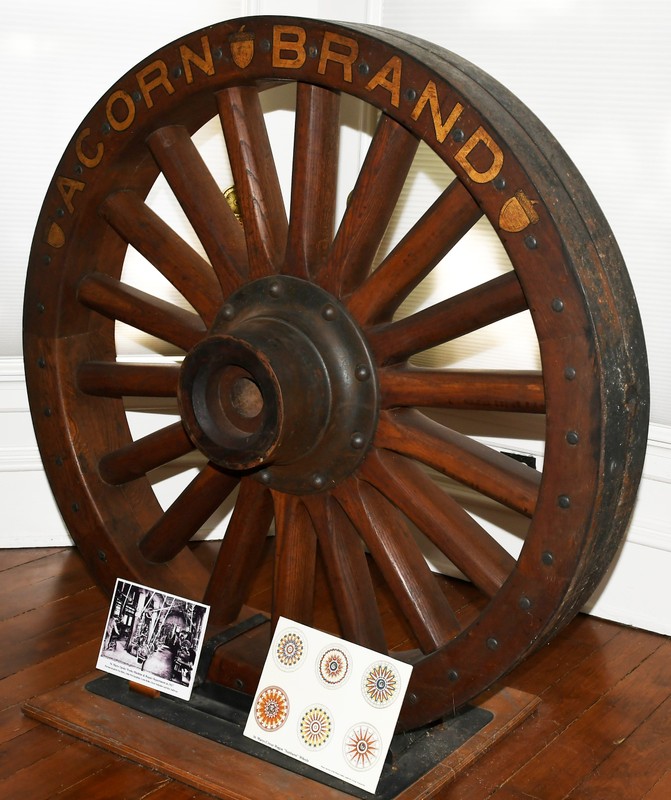
Easy Washing Machine Company Salesman's Sample, St. Marys
.jpg)
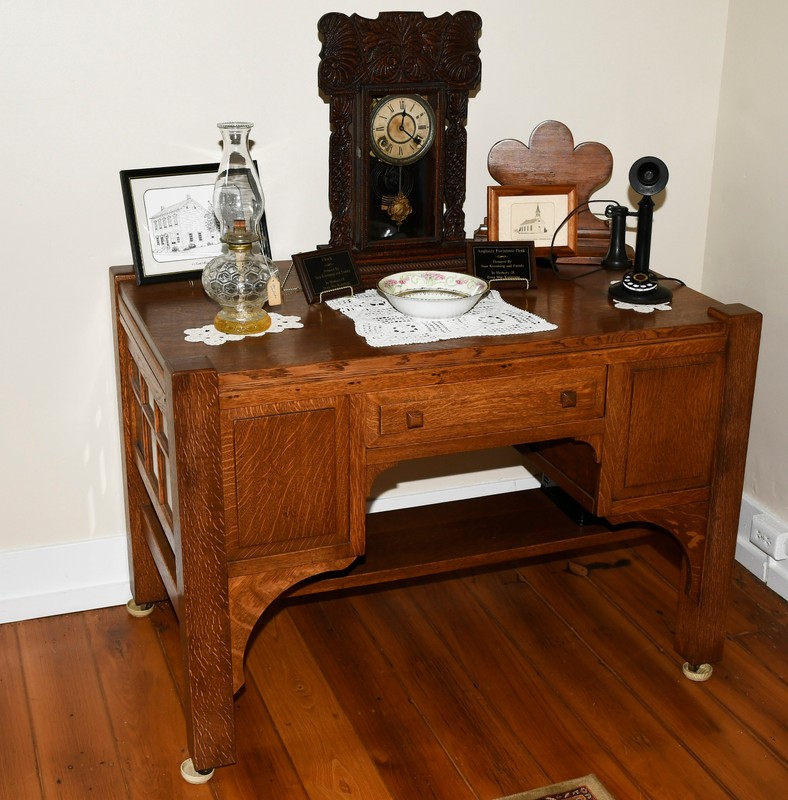
M. Brown Bentwood Churn Salesman's Sample, Wapakoneta
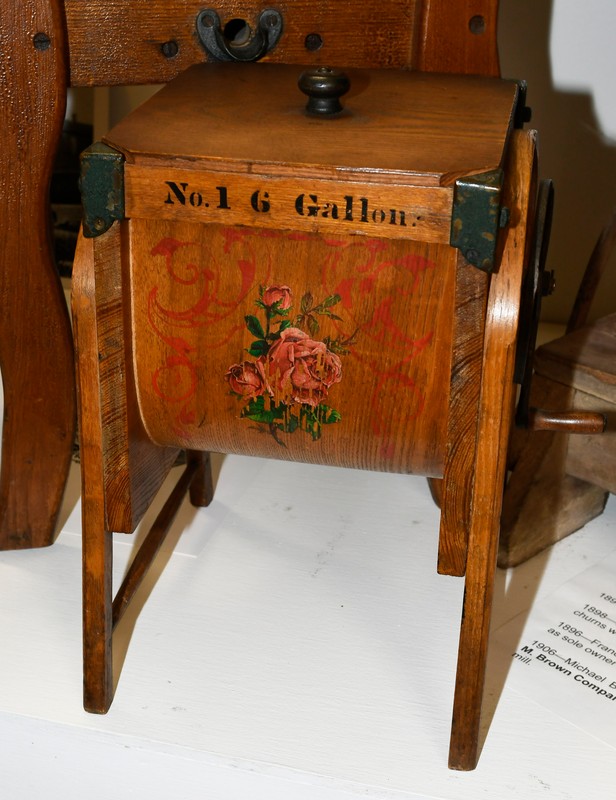
Standard Churn Company Ice Cream Freezer, Wapakoneta
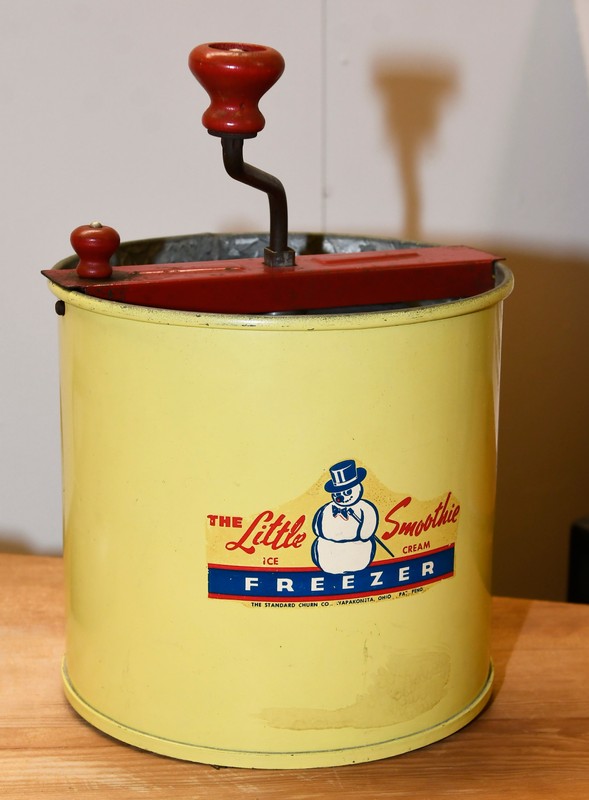
Krietzer Buggy, Wapakoneta
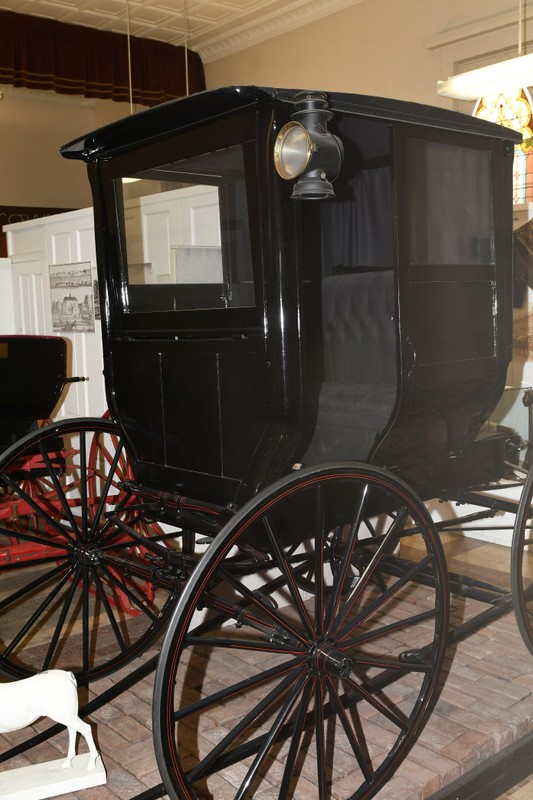
Wapakoneta Machine Company sign and Turney Toy truck, Wapakoneta
